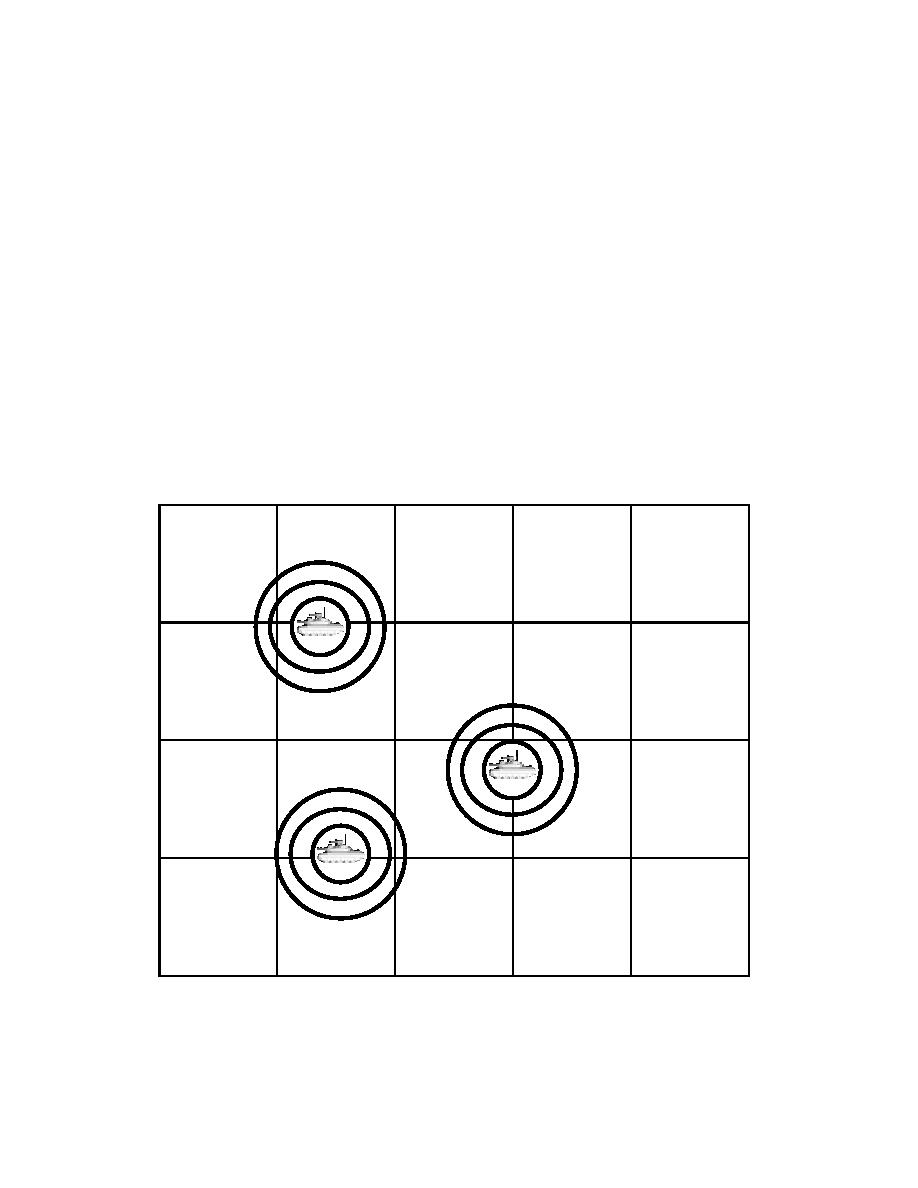
characteristics must be considered: explosives (with the
remainder of the impact area occupy another. In the
exception of NG [melting point 13C]) are solids at
sampling design illustrated in Figure 26, the im-
environmental temperatures; most explosives have low
pact area is divided into square grids from which
aqueous solubility; and they dissolve very slowly in
duplicate multi-increment samples are collected.
water. As a result, the bulk of explosives residues tend
Superimposed on the square grid is the stratum
to reside in the surface soil and are heterogeneously
containing the targets where multi-increment samples
distributed over short distances.
are formed from radial bands at various distances
Given these characteristics, and our objective to
from each target. Such a design should provide
estimate mean explosives concentrations in surface soil,
sufficient data to assess the extent of contamination on
a multi-increment or composite sampling approach will
an impact area.
be used. The detection limits provided by Method
8095 are sufficiently low to permit multi-increment
CONCLUSIONS
sampling without concern for overlooking significant
contamination sources. Based on data from the
Washington Range and other impact areas, targets at
This report summarizes a reconnaissance visit to an
which various munitions are fired will often have
impact area on Fort Greely during the summer of 2000.
higher concentrations of contaminants than areas
This visit was the first sampling event in a multiphase
farther away (Jenkins et al. 1998). A stratified random
program to develop sampling methods to assess the
sampling (Gilbert 1987) design could be used where
potential for surface and groundwater contamination
these high-impact zones occupy one stratum, and the
from ordnance testing and training activities.
Figure 26. Conceptual illustration of a stratified sampling plan to estimate mean ex-
plosives concentrations in impact area surface soil. The impact area is divided into
square grids from which duplicate multi-increment samples. The surface soils around
targets, around where detonations are concentrated, are sampled in radial bands
around each target.
33



 Previous Page
Previous Page
